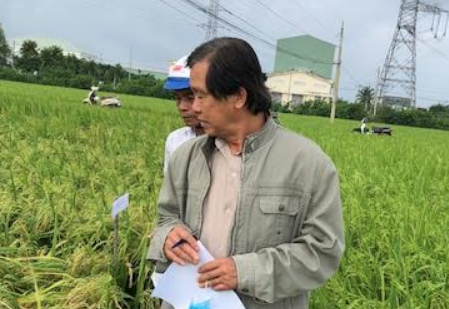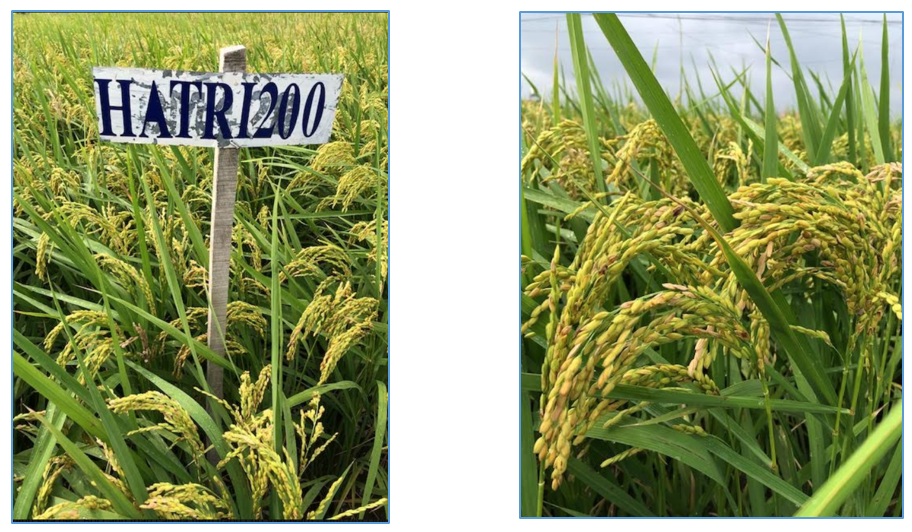HATRI news 6 September 2020
2020 SUMMER FIELD TRIP AT HÒA PHÚ RICE RESEARCH STATION,
LONG AN PROVINCE
On September 4 2020, seasonal rice evaluation was held by Hoa Phu Rice Research Station, Châu Thành district, Long An province.
The yield trial nursery included 4 non-waxy rice genotypes and 5 glutinous genotypes derived by HATRI; with the emphasis on glutinous high yielding variety adapted to Long An provine. Because Long An is the biggest area of Mekong Delta to produce glutinous rice with 128-140 thousand ha of growing area, to offer 360-370 thousand tonnes of milled rice annually, mostly for export.
Mr. Trinh Hoang Viet, Head, Hoa Phu Rice Station and his colleagues introduced to Prof. Nguyễn Thị Lang and Prof. Bùi Chí Bửu the experiment, to assess the advanced yield trial nursery. He paid more attention to glutinous HATRI 11nep, which became promising in both alluvial and acid sulfate soils in large scale demonstration.

Figure 1: Hoa Phu Rice Research Station, Long An (BC Buu photo, 4-9-2020).

Figure 2: Mr Trịnh Hoàng Việt, Head, Hoa Phu Station
Mr. Nguyen Chi Thien, Deputy Director of Long An Service of Agricultre and Rural Development addressed his opening remark, and appreciated the mutual cooperation, how to enrich the gene pool of glutinous rice collection instead of only one variety Lang Co Rice Variety.
Mr Nguyen Thanh Lap, Vice Head, Crop production and Plant protection emphazied the features of rice variety 46 (Láng Cò glutinous rice cultivar for over 30 years), derived from IR4625 through local selection continuously. Major pest and disease susceptibility becomes the main constraint, it is necessary to have a genotype replacing it how to reduce insecticides and fungicides.
Prof Nguyen Thi Lang answered questions and explained some more details on these rice genotypes of the He Thu rice yield nursery.
The workshop highly accepted the promising lines viz. HATRI 11 nep (nếp), LA 2, HATRI 200, LA 5 and HATRI 18 nep, ranking from first to fifth rank.

Figure 3: HATRI 2000 (left) non-waxy genotype and HATRI 11nep (right) glutinous genotype
(BC Buu photo, 4-9-2020)
.png)










